It's safe to say that Liverpool have been the best team in the world in 2024-25. Arne Slot's team is now the overwhelming favorite to win the Premier League -- Arsenal have 12 matches to make up 11 points -- and the betting favorite to win the Champions League, though there's plenty of work remaining there. With 30 goals and 21 assists in 38 matches (in all competitions), Mohamed Salah is enjoying just about the best contract year any athlete has ever had in any sport; everything has come up Reds in Slot's first year succeeding Jurgen Klopp.
In other words, Liverpool own the present tense, but thanks primarily to the Transfer Rumor Industrial Complex, our soccer discussions always involve at least a hint of the future, too.
For Liverpool, expiring contracts for Salah, Virgil van Dijk and Trent Alexander-Arnold have remained talking points throughout this brilliant run. Of the 16 Liverpool players with at least 1,200 minutes in all competitions this season, only three are under 25 years old. The club has a lot of decisions to make moving forward, and as we've seen with Manchester City's difficulties this season, dominating now certainly doesn't guarantee dominance in the future.
So, as we watch Liverpool's and others' title pushes move forward across Europe's top five leagues, let's take a minute to look far into the future. Never mind contract talks and potential summer moves; let's talk about which clubs are best positioned to succeed, say, three years from now.
How we're going to do this
Peering into a crystal ball can never, ever be an exact science, but let's at least bring some math to the conversation. To determine the future power rankings below, I broke things into four categories:
1. Club consistency and quality. This accounts for about 37% of the rankings and factors in things such as teams' current Opta power rankings (to capture current quality), their four-year performance in league play (consistency) and their overall Transfermarkt roster value (upside and potential).
2. Young talent. When Liverpool broke through under Klopp in 2018-19 (Champions League title) and 2019-20 (Premier League title), they did so with a core roster of players perfectly crafted to peak around the same time. Since the generally assumed peak age range for a player is around 24 to 28 (with exceptions), and we're looking about three years into the future, I looked at the combined Transfermarkt values for teams' players currently under 25 years old. This accounts for about 32% of the rankings.
3. Money. Duh. Those with the cash run the sport, and while money has played an obvious role in both (1) and (2) above, I also incorporated the past three years of figures from the Deloitte Football Money League, plus teams' current estimated wages (from FBref.com and other sources). This is about 18% of the formula.
4. Who's just really well run? This produced the oddest rankings of the bunch, but I wanted it to play a role. Call it the "Manchester United don't deserve to be that high on the list!" factor. Using a ratio of estimated wages to actual performance -- which props up the likes of Club Brugge and Lille a bit, while knocking down teams like Manchester United and West Ham -- I factored this in for about 13% of the formula. Most of the top teams rank right in the middle in this regard (which makes sense, since the best clubs are also the richest and don't have to be perfectly run), but there are some outliers.
I ended up using a list of 122 teams -- basically, anyone in either the top 100 of Opta's power rankings or Transfermarkt's combined player values -- to come up with these rankings. Let's see who owns the future. (No. 1 won't surprise you at all.)
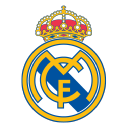 1. Real Madrid
1. Real Madrid
Consistency: No. 2 | Young talent: No. 2 | Money: No. 1 | Well run: No. 72
Real Madrid have the most money and arguably the best set of under-25 talent in the world. Attackers Vinícius Júnior and Rodrygo are 24, utility man Eduardo Camavinga is 22, do-it-all midfielder Jude Bellingham is 21, and the club is still working on establishing roles for sparkling youngsters Arda Güler (20) and Endrick (18).
Alejandro Moreno breaks down Endrick's goal against Real Sociedad and looks ahead to how impactful he can be for Real Madrid.
The only reason they're No. 2 on the Young Talent list is that Chelsea has signed half of Europe's 19-year old pros in recent years, and looking specifically at under-25 talent undersells the club a bit considering Kylian Mbappé is only 26. Eighteen players have logged at least 900 minutes in all competitions for Real Madrid this year, and only four of them are in their 30s. Luka Modric's endless presence skews the average age a bit, but the team's new generation has been well-established.
They'll need a new manager following Carlo Ancelotti's impending departure, and anytime they want to stop complaining about and seemingly trying to manipulate the officials, that'd be great. They don't need the help: they're the gold standard moving forward.
 2. Paris Saint-Germain
2. Paris Saint-Germain
Consistency: No. 1 | Young talent: No. 5 | Money: No. 3 | Well run: No. 74
The well-bankrolled French giants are well on their way to their 11th Ligue 1 title in 13 seasons, and unlike in many recent seasons, they're winning with relative youth in 2024-25. Of their top 14 minutes-earners this season, only three are older than 26, and even with 27-year-old Ousmane Dembélé enjoying an incredible season (23 goals and five assists in all competitions) and 24-year old Khvicha Kvaratskhelia having just arrived, under-25s have accounted for 54% of the team's goals and 63% of their assists.
Bradley Barcola (20), Warren Zaïre-Emery (18) & Co. are setting PSG up to succeed for quite a while.
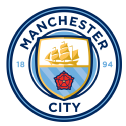 3. Manchester City
3. Manchester City
Consistency: No. 3 | Young talent: No. 3 | Money: No. 2 | Well run: No. 76
In the present tense, City are an absolute mess. They entered 2024-25 a bit on the creaky side and immediately lost their most important player, Rodri, to a season-ending injury. They then collapsed to a degree never seen from a Pep Guardiola side, and while it appears they've righted the ship to some degree, any goals they brought into the season are virtually toast. Oh yeah, and the 115 charges still loom as a black cloud overhead for at least a little bit longer.
Gab Marcotti and Julien Laurens discuss Arsenal's striker struggles and make suggestions for who could replace Mikel Merino.
Oh yeah, and they also still have Erling Haaland (24), Phil Foden (24), Josko Gvardiol (23), Jérémy Doku (22), Savinho (20), the fruits of a recent January spending spree -- Omar Marmoush, Nico Gonzalez, Abdukodir Khusanov, Vitor Reis -- and the backing of one of the richest entities to own a soccer club. The present tense might be a bit spotty, but unless the club's fight against the Premier League results in a massive point deduction and relegation, City's future is still as bright as anyone's in England.
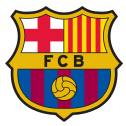 4. Barcelona
4. Barcelona
Consistency: No. 5 | Young talent: No. 4 | Money: No. 5 | Well run: No. 71
First, we must acknowledge the flaws in my methodology. There was no built-in punishment, in either the "Money" or "Well run" categories, for Barcelona's insistence on spending future money to fund shaky spending in the present, or for their constant issues with registering their players with their cap restraints. If I were ranking this club subjectively, I would not have them anywhere near the top in "Money," and I'd consider ranking them far lower in "Well run." That said, I'd also subjectively rank them No. 1 in the "Young talent" category.
In recent years, no club has better saved itself from itself by producing talent from within. For all their issues, they still have Pedri (22), Gavi (20), Pau Cubarsí (18) and the otherworldly forward Lamine Yamal (17), plus players such as Marc Bernal (17), Marc Casadó (21) and even Ansu Fati (22), who are very much young enough to still become major stars. We should just expect La Masia to produce further strong contributors as well.
There's no telling what desperate levers might be pulled in the coming years, but Barca has the strongest base of young talent to lean on, and that will take them a long way. (Hell, it might take them to a LaLiga crown and the Champions League final this very season.)
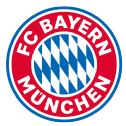 5. Bayern Munich
5. Bayern Munich
Consistency: No. 8 | Young talent: No. 8 | Money: No. 6 | Well run: No. 77
Bayern have basically built two different squads over the past couple of years. One is veteran-heavy, dominated by stalwarts such as Joshua Kimmich and Manuel Neuer and newer veterans such as Harry Kane. The other Bayern is young and tantalizing. With Michael Olise (23) joining over the summer, Jamal Musiala (21) and Alphonso Davies (24) signing recent contract extensions and others such as Aleksandar Pavlovic (20) and Josip Stanisic (24) coming into their own, Bayern: The Next Generation looks awfully exciting.
Despite injuries and up-and-down play of late, Bayern are well on their way to reestablishing themselves atop the Bundesliga hierarchy this season, and among teams in the bottom half of the Champions League bracket, they've got the second-best odds of reaching the final. Just imagine what might happen when Musiala & Co. approach their prime.
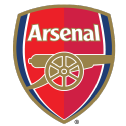 6. Arsenal
6. Arsenal
Consistency: No. 6 | Young talent: No. 6 | Money: No. 9 | Well run: No. 70
Despite this sport's rampant impatience, Arsenal have slowly and methodically built a dynamite squad. The proof of this is their current frustration. Arsenal finished between fifth and eighth in the Premier League every season between 2016-17 and 2021-22, but they're now disgruntled at the thought of an injury-plagued (and third straight) second-place finish. They're finally going to finish ahead of Manchester City this season, but Liverpool butted their way to the front of the line.
Gab Marcotti and Julien Laurens question why Enzo Maresca said Chelsea will ask Cole Palmer if he is still "happy" if they fail to qualify for the Champions League.
That said, Arsenal's time could still be coming. With both Liverpool (age and expiring contracts) and City (existentialism) facing impending questions, Mikel Arteta continues to compile young depth. William Saliba (23), Gabriel Martinelli (23), Bukayo Saka (23), Riccardo Calafiori (22) and now Myles Lewis-Skelly (18) and Ethan Nwaneri (17) could form a dynamite roster core, and other key players such as Martin Ødegaard (26), Declan Rice (26) and Kai Havertz (25) aren't exactly old. Injuries remain a concern, and Gunner fans were frustrated by a lack of January transfer activity, but it feels like everything this club has done in recent years has been with a 2025-27 peak in mind.
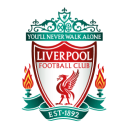 7. Liverpool
7. Liverpool
Consistency: No. 4 | Young talent: No. 13 | Money: No. 7 | Well run: No. 66
Let's be honest: So far, these future power rankings have looked a lot like the current power rankings. Not exactly a revelatory, controversial list. But this one's pretty interesting. Liverpool have the current best team in the world and plenty of money, but using the criteria at hand, they aren't positioned quite as well as others for future world domination.
Despite a breakout season from midfielder Ryan Gravenberch (22) and sustained quality from Dominik Szoboszlai (24) and Curtis Jones (24), under-25 players have accounted for only 26% of Liverpool's minutes, 25% of their assists and 13% of their goals this season. Meanwhile, four players aged 30 or older have logged at least 2,100 minutes in all competitions, and two (Salah and Van Dijk) have recorded at least 3,200 minutes.
The club has serious choices to make when it comes to contract extensions for Van Dijk (likely) and Salah (mysterious), but regardless of those choices, it has quite a bit of work to do when it comes to building for the future.
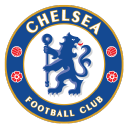 8. Chelsea
8. Chelsea
Consistency: No. 18 | Young talent: No. 1 | Money: No. 8 | Well run: No. 86
In transitioning from Roman Abramovich's ownership to Todd Boehly's BlueCo, Chelsea flipped from being a rich club that acquires some of the world's best talents to being a rich club that acquires as much young talent as possible.
The approach has given them an abundance of fun youngsters: Thirty-six different under-25 players have seen the pitch for the club this season, including eight teenagers, and under-25s have accounted for 68% of Chelsea's minutes, 62% of their goals and 77% of their assists. Cole Palmer has quickly become one of the Premier League's best attackers (though he's battling a bit of a funk at the moment), and no club has a higher volume of intriguing youngsters.
Rob Dawson says the changes INEOS have made to Manchester United have caused a split among the club's fans.
Oh yeah, and Chelsea are seventh in the Premier League right now, having won just three of their past 12 matches in all competitions. This could be their third straight season finishing sixth or worse in the league. None of this asset compilation has paid off yet from a results perspective, and even if it eventually does, you could easily wonder if simply paying lots of money for fewer, more proven players would have paid off more quickly.
Regardless, Chelsea certainly have enough raw potential to be a strong team three years from now. Even if they need to prove themselves more than they have of late.
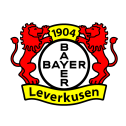 9. Bayer Leverkusen
9. Bayer Leverkusen
Consistency: No. 9 | Young talent: No. 11 | Money: No. 36 | Well run: No. 23
The first club on the list that isn't a financial superpower is the reigning Bundesliga champion that employs both manager Xabi Alonso and elite attacker Florian Wirtz. Since neither of them will likely be employed by the club in three years, you can question Bayer Leverkusen's position on this list. But their consistency levels are high, and few have proved more well run when it comes to reinvesting transfer sales into exciting transfer acquisitions. If (or when) they lose Wirtz, they are likely to reinvest the money they receive in a quality fashion.
While Wirtz is an otherworldly talent, Leverkusen's recent rise has come because of their depth of young talent: They also have Amine Adli (24), Jeremie Frimpong (24), Victor Boniface (24) and Piero Hincapié (23), not to mention a number of key contributors between ages 25 and 27. They won't consistently reach the heights they saw last season when they rolled unbeaten to the Bundesliga title, but this club increasingly looks built for the long haul.
 10. Tottenham Hotspur
10. Tottenham Hotspur
Consistency: No. 22 | Young talent: No. 7 | Money: No. 10 | Well run: No. 85
Like Chelsea, Spurs haven't really turned potential into production of late. They're currently languishing in 12th place (despite being tied for the third-best goal differential in the league), and they are well on their way to missing the Champions League for the fifth time in six seasons. No club has pulled the "Bring in a manager, sign players that suit his style, then fire the manager and replace him with his stylistic opposite (and then sign players that fit his style, and so on, and so forth)" routine more than Spurs in recent years, and it has been to their detriment.
They have money, though, and concerns about stylistic incongruity aside, they've amassed quite a bit of exciting young talent at this point, from Dejan Kulusevski (24) to Micky van de Ven (23), from Brennan Johnson (23) to Pape Matar Sarr (22), and from Destiny Udogie (22) to Bayern loanee (for now, anyway) Mathys Tel (19).
It's obviously hard to say manager Ange Postecoglou is the definite long-term answer there, but when you've got money and young talent, you're going to grade out respectably on a list like this.
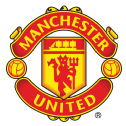 11. Manchester United
11. Manchester United
Consistency: No. 35 | Young talent: No. 9 | Money: No. 4 | Well run: No. 101
Manchester United are basically a magnified Tottenham Hotspur at this point: They have even more money, and they've created even more problems for themselves in terms of a long-term vision. They've earned that triple-digit "Well run" ranking. But again: They have money, and they have Manuel Ugarte (23), Amad Diallo (22), Alejandro Garnacho (20), Kobbie Mainoo (19), Leny Yoro (19), Rasmus Højlund (22), Joshua Zirkzee (23) et al. They're only a few good decisions away from fielding an intriguing team.
Could you have said this at any point in the past 12 years? Of course! Did they make those good decisions at any point? Of course not! But it remains true.
 12. Juventus
12. Juventus
Consistency: No. 14 | Young talent: No. 20 | Money: No. 13 | Well run: No. 62
The first Italian team on this list is one that has mostly disappointed in the 2020s. Since their nearly decade-long run of Scudettos ended in 2020-21, the club has been forced to reckon with the number of shaky financial decisions it had made in attempting to keep that streak alive and finally break through with another Champions League title. That reckoning has actually turned out to be a pretty good thing.
While Juve were basically dragged, kicking and screaming, into acquiring and playing younger players (often with "loan with an obligation to buy" deals), they've also created the most exciting young roster core in Serie A with wingers Francisco Conceição (22) and Kenan Yildiz (19) enjoying intriguing seasons and early-prime players like Timothy Weah (26), Nico Gonzalez (26) and Teun Koopmeiners (26) all playing well.
Inconsistency caught up to them in their recent Champions League exit, but they've worked their way back into Italy's top four, and there's far more reason for optimism here than there was a couple of years ago.
 13. Brighton & Hove Albion
13. Brighton & Hove Albion
Consistency: No. 36 | Young talent: No. 10 | Money: No. 20 | Well run: No. 42
Based on the pure number of decisions they had to nail to advance from the third division in 2010-11, then from the Championship in 2016-17, then from an average Premier League point total of 39.5 for four seasons to 53.7 over the past three (and a current pace for about 58.5 in 2024-25), it's safe to say they should probably rank higher than the 40s in the "Well run" category. It's incredible to think about where the Seagulls have come from and where they might still be able to go.
Granted, ranking 13th on this list still makes you seventh in England, but with strong revenue and a strong-as-ever base of young talent -- Carlos Baleba (21), Joao Pedro (23), Yankuba Minteh (20), Georginio Rutter (22), Bart Verbruggen (22), Jan Paul van Hecke (24), Yasin Ayari (21), Jack Hinshelwood (19), Tariq Lamptey (somehow still only 24) -- it wouldn't be a surprise if Brighton eventually pushed into a Champions League spot (they're currently just four points away) even though they're destined to lose a few of these players to richer English squads.
We know the ceiling will forever be higher for the Manchester Uniteds of the world, but no club has raised its own ceiling more than Brighton over the past decade.
 14. Benfica
14. Benfica
Consistency: No. 15 | Young talent: No. 22 | Money: No. 22 | Well run: No. 31
Dominate your domestic league, then lose your best players for huge transfer fees before you officially have the pieces to make a major Champions League run. Rinse and repeat.
Benfica have won six of the past 11 Primeira Liga crowns and reached the quarterfinals of either the Champions League or Europa League five times in nine seasons. (They'll have to beat Barcelona in March to make that seven of 12.) But they haven't made it past a quarterfinal since reaching the Europa League final in 2013 and 2014. Still, they're tied with Sporting atop the domestic table this season, and they lead Sporting (17th) by a nose on this list because of recent revenue.
They've got quite a few young players playing important roles this season, including Orkun Kökçü (24), Tomás Araújo (22), António Silva (21), Anatoliy Trubin (23) and Álvaro Carreras (21), and while some of those players will inevitably land in the Premier League soon, the base of talent here is impressive. Benfica probably have the highest upside of Portugal's heavyweights at the moment.
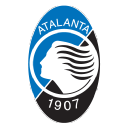 15. Atalanta
15. Atalanta
Consistency: No. 17 | Young talent: No. 18 | Money: No. 47 | Well run: No. 8
Like Bayer Leverkusen, Atalanta's place on this list is perhaps tied more than is preferable to the qualities of a specific manager; if Gian Piero Gasperini, 67, ever loses his touch or decides to retire, then a spot in this top 15 might not seem as clear. But with Gasperini in place, Atalanta have punched above their weight class as well as almost any club in the world.
The defending Europa League champions have played in the Champions League in four of the past six seasons (and came achingly close to the semifinals in 2020), and they're currently third in Serie A and well-positioned to make it next year, too. (They're also only three points out of first place.) They lose stars, replace them with new stars and press forward. And while some key players in their 30s have logged major minutes this season -- midfielders Marten de Roon and Mario Pasalic, defender Berat Djimsiti -- Gasperini plays a ton of guys. Mateo Retegui (25) and Ademola Lookman (27) have combined for 41 goals and 11 assists in all competitions this season and aren't exactly old, and under-25s like Charles De Ketelaere and Lazar Samardzic have accounted for 35% of Atalanta's assists and 20% of their goals.
The pipeline of talent remains strong.
The full list of 122 teams is at the bottom, but before we unfurl the whole thing, let's look at categories and countries.
TOP FIVE CLUBS: CONSISTENCY
• 1. PSG
• 2. Real Madrid
• 3. Manchester City
• 4. Liverpool
• 5. Barcelona
PSG certainly could have benefited from stronger domestic competition of late, but there's no doubting that they've been steadily successful in Ligue 1.
TOP FIVE CLUBS: YOUNG TALENT
• 1. Chelsea
• 2. Real Madrid
• 3. Manchester City
• 4. Barcelona
• 5. PSG
Again, Real Madrid probably have the biggest young names, but Chelsea have the most. They just have yet to parlay that into actual success.
TOP FIVE CLUBS: MONEY
• 1. Real Madrid
• 2. Manchester City
• 3. PSG
• 4. Manchester United
• 5. Barcelona
Real Madrid and Manchester City have traded the top spot in the Deloitte money rankings in recent years, but it goes without saying that they are both ridiculously powerful from the perspective of pure financial heft. So are Manchester United, no matter what dysfunction has stemmed from said heft.
TOP FIVE CLUBS: WELL RUN
• 1. Club Brugge
• 2. Bologna
• 3. Columbus Crew
• 4. Lille
• 5. Union Saint-Gilloise
Hello, Columbus! The Opta power ratings loved the Crew last season -- they reached as high as the 50s for a moment -- though the baked-in parity measures of Major League Soccer will likely drag them down soon. Regardless, only a couple of teams can top them in terms of the wages-to-power-ratings ratio I used here.
Let's quickly lay things out by country as well.
FUTURE POWER RANKINGS: ENGLAND
England featured seven of the top 13 teams above, but who else fills in an English top 10?
• 1. Manchester City (third overall)
• 2. Arsenal (sixth)
• 3. Liverpool (seventh)
• 4. Chelsea (eighth)
• 5. Tottenham Hotspur (10th)
• 6. Manchester United (11th)
• 7. Brighton (13th)
• 8. Newcastle (19th)
• 9. Aston Villa (29th)
• 10. Bournemouth (33rd)
I was honestly surprised Newcastle and Aston Villa didn't both rank higher.
FUTURE POWER RANKINGS: SPAIN
• 1. Real Madrid (first overall)
• 2. Barcelona (fourth)
• 3. Athletic Club (22nd)
• 4. Atletico Madrid (23rd)
• 5. Real Sociedad (31st)
• 6. Villarreal (37th)
• 7. Girona (65th)
• 8. Osasuna (70th)
• 9. Real Betis (71st)
• 10. Valencia (75th)
Atletico Madrid's presence in the 20s is interesting. They too are driven by the power of a specific manager (Diego Simeone), and even by their veteran-loving standards, they've allowed themselves to age quite a bit: under-25s have logged only 12% of their minutes in all competitions this season, and only two (right midfielder Giuliano Simeone and central midfielder Pablo Barrios) have made any real contributions. Meanwhile, nine players aged 30 or older have recorded 1,200-plus minutes.
That's a bad ratio, even for them, and Atleti likely have a roster refresh ahead.
FUTURE POWER RANKINGS: GERMANY
• 1. Bayern Munich (fifth overall)
• 2. Bayer Leverkusen (ninth)
• 3. Borussia Dortmund (18th)
• 4. RB Leipzig (20th)
• 5. Eintracht Frankfurt (26th)
• 6. VfB Stuttgart (35th)
• 7. Mainz (73rd)
• 8. Freiburg (78th)
• 9. Wolfsburg (83rd)
• 10. Borussia Monchengladbach (103rd)
While Bayer Leverkusen graded out quite favorably, two other clubs known for thriving with younger talent -- Borussia Dortmund and RB Leipzig -- barely scraped out top-20 rankings. Neither is performing as well as expected this season, and neither ranks in the top 10 in young talent either. In a world in which the Real Madrids and Chelseas are content with simply acquiring teenage up-and-comers to begin with instead of acquiring them from BVB or RBL after a few years of development, these clubs' developmental identities are in flux. I'm fascinated by how each chooses to build from here.
(Also: Wow, what a drop-off from the top six to the rest of the country. No German club ranks between 36th and 72nd on the list.)
FUTURE POWER RANKINGS: ITALY
• 1. Juventus (12th overall)
• 2. Atalanta (15th)
• 3. Inter Milan (21st)
• 4. AC Milan (24th)
• 5. Napoli (32nd)
• 6. Fiorentina (40th)
• 7. Bologna (41st)
• 8. Lazio (42nd)
• 9. Roma (46th)
• 10. Torino (74th)
It's notoriously difficult for younger players to break through in Serie A, therefore it's obvious Italian clubs would struggle to stand out on a list like this. Juve got into the top 15 with a begrudging youth movement, and Atalanta did so via the power of Gasperini, but both Milan clubs rank in the 20s, and Napoli are in the 30s. Only one under-25 player has recorded more than 900 minutes for Inter (defender Yann Bisseck, 24), and only one under-24 player has recorded even 100 minutes (midfielder Kristjan Asllani).
AC Milan, meanwhile, have involved a few more young players -- Yunus Musah (22), Malick Thiaw (23), Strahinja Pavlovic (23) -- but didn't grade out nearly as well as rivals Inter from a consistency perspective.
FUTURE POWER RANKINGS: FRANCE
• 1. PSG (second overall)
• 2. Monaco (25th)
• 3. Lille (28th)
• 4. Marseille (43rd)
• 5. Lyon (48th)
There's no reason to expect PSG's run of Ligue 1 dominance to end anytime soon, but I was curious who might take the second spot. As it turns out, Monaco eked it out over Lille thanks to youth. Players like Maghnes Akliouche, Eliesse Ben Seghir and Wilfried Singo (and, when healthy, Folarin Balogun) could either front a very good Monaco team soon or earn it healthy transfer fees.
FUTURE POWER RANKINGS: EVERYWHERE ELSE
• 1. Benfica, Portugal (14th)
• 2. PSV Eindhoven, Netherlands (16th)
• 3. Sporting CP, Portugal (17th)
• 4. Feyenoord, Netherlands (27th)
• 5. Porto, Portugal (30th)
• 6. Club Brugge, Belgium (34th)
• 7. Ajax, Netherlands (36th)
• 8. Al-Hilal, Saudi Arabia (45th)
• 9. Celtic, Scotland (49th)
• 10. Slavia Prague, Czechia (50th)
Predictably, the top five names here (and six of the top seven) are from either Portugal or the Netherlands, aka the best European leagues outside of the Big Five. The most well-positioned clubs from either North or South America, by the way? Palmeiras (57th), Columbus Crew (68th), Botafogo (79th), Flamengo (89th) and River Plate (97th).
AND FINALLY, THE FULL LIST
• 1. Real Madrid (Spain)
• 2. PSG (France)
• 3. Manchester City (England)
• 4. Barcelona (Spain)
• 5. Bayern Munich (Germany)
• 6. Arsenal (England)
• 7. Liverpool (England)
• 8. Chelsea (England)
• 9. Bayer Leverkusen (Germany)
• 10. Tottenham Hotspur (England)
• 11. Manchester United (England)
• 12. Juventus (Italy)
• 13. Brighton (England)
• 14. Benfica (Portugal)
• 15. Atalanta (Italy)
• 16. PSV Eindhoven (Netherlands)
• 17. Sporting CP (Portugal)
• 18. Borussia Dortmund (Germany)
• 19. Newcastle United (England)
• 20. RB Leipzig (Germany)
• 21. Inter Milan (Italy)
• 22. Athletic Club (Spain)
• 23. Atletico Madrid (Spain)
• 24. AC Milan (Italy)
• 25. Monaco (France)
• 26. Eintracht Frankfurt (Germany)
• 27. Feyenoord (Netherlands)
• 28. Lille (France)
• 29. Aston Villa (England)
• 30. Porto (Portugal)
• 31. Real Sociedad (Spain)
• 32. Napoli (Italy)
• 33. Bournemouth (England)
• 34. Club Brugge (Belgium)
• 35. VfB Stuttgart (Germany)
• 36. Ajax (Netherlands)
• 37. Villarreal (Spain)
• 38. Nottingham Forest (England)
• 39. Brentford (England)
• 40. Fiorentina (Italy)
• 41. Bologna (Italy)
• 42. Lazio (Italy)
• 43. Marseille (France)
• 44. Crystal Palace (England)
• 45. Al-Hilal (Saudi Arabia)
• 46. Roma (Italy)
• 47. Lyon (France)
• 48. Everton (England)
• 49. Celtic (Scotland)
• 50. Slavia Prague (Czechia)
• 51. West Ham United (England)
• 52. Fulham (England)
• 53. AZ Alkmaar (Netherlands)
• 54. Fenerbahce (Turkey)
• 55. Union Saint-Gilloise (Belgium)
• 56. Nice (France)
• 57. Palmeiras (Brazil)
• 58. Braga (Portugal)
• 59. Crvena Zvezda (Serbia)
• 60. Galatasaray (Turkey)
• 61. Olympiacos (Greece)
• 62. Strasbourg (France)
• 63. Genk (Belgium)
• 64. Wolves (England)
• 65. Girona (Spain)
• 66. Al-Nassr (Saudi Arabia)
• 67. Rangers (Scotland)
• 68. Columbus Crew (USA)
• 69. Lens (France)
• 70. Osasuna (Spain)
• 71. Real Betis (Spain)
• 72. Bodø/Glimt (Norway)
• 73. Mainz (Germany)
• 74. Torino (Italy)
• 75. Valencia (Spain)
• 76. FC Twente (Netherlands)
• 77. Dinamo Zagreb (Croatia)
• 78. Freiburg (Germany)
• 79. Botafogo (Brazil)
• 80. Viktoria Plzen (Czechia)
• 81. Anderlecht (Belgium)
• 82. Leeds United (England)
• 83. Wolfsburg (Germany)
• 84. Sevilla (Spain)
• 85. Sparta Prague (Czechia)
• 86. RB Salzburg (Austria)
• 87. Zenit St. Petersburg (Russia)
• 88. Shakhtar Donetsk (Ukraine)
• 89. Flamengo (Brazil)
• 90. Rennes (France)
• 91. Brest (France)
• 92. Rayo Vallecano (Spain)
• 93. Genoa (Italy)
• 94. Udinese (Italy)
• 95. Getafe (Spain)
• 96. Celta Vigo (Spain)
• 97. River Plate (Argentina)
• 98. Southampton (England)
• 99. Corinthians (Brazil)
• 100. Leicester City (England)
• 101. Burnley (England)
• 102. Mallorca (Spain)
• 103. LA Galaxy (USA)
• 104. Borussia Mönchengladbach (Germany)
• 105. Ipswich Town (England)
• 106. Hoffenheim (Germany)
• 107. Spartak Moscow (Russia)
• 108. Al-Ittihad (Saudi Arabia)
• 109. Werder Bremen (Germany)
• 110. Como (Italy)
• 111. Panathinaikos (Greece)
• 112. Deportivo Alaves (Spain)
• 113. Al-Ahli (Saudi Arabia)
• 114. Besiktas (Turkey)
• 115. Parma (Italy)
• 116. Las Palmas (Spain)
• 117. Union Berlin (Germany)
• 118. Reims (France)
• 119. Sunderland (England)
• 120. Sheffield United (England)
• 121. Middlesbrough (England)
• 122. Nantes (France)
